It is remarkable how quickly human beings become accustomed to the extraordinary. Whenever a groundbreaking technological feat takes place for the first time, it is accompanied by widespread coverage from the media and rapt attention from the public. With that initial success in hand, engineers will usually repeat their achievement, then do it a third time. The first few reoccurrences will make the news, but with each successful launch, flight, or test, interest will inevitably diminish. After just a few repetitions, what once seemed remarkable becomes commonplace, and something which was met with awe just a few years ago – such as vertically landing a rocket on a barge – will be greeted by a collective yawn. Widespread interest is only reignited when something goes horribly wrong. That pattern repeated itself during the Apollo lunar landings, the flights of the Space Shuttle, and the exploits of the Mars rovers. SpaceX’s Falcon 9 is no exception.

This “normalization of the miraculous” was shattered on the night of Thursday, July 11th. Starlink 9-3 was SpaceX’s 69th Falcon 9 mission of 2024. It was a standard Starlink mission, making it one element in a rapid cadence of launches which continue to expand the company’s megaconstellation of over 6,000 satellites. Starlink satellites are providing Internet access to people in locations ranging from rural areas to ships at sea to war-torn American allies such as Ukraine. The payload of Starlink 9-3 consisted of 20 “V2 Mini” satellites, including 13 “Direct to Cell” satellites which can communicate with cell phones as part of T-Mobile’s wireless network.
The flight got underway at 7:39 PM Pacific time (10:39 PM EST). The veteran Falcon 9 core B1063 lifted off from Vandenberg Space Force Base’s Space Launch Complex 4 (SLC-4) with a fully-fueled second stage and its Starlink cargo. This was the 19th mission for B1063, the second-oldest booster based on the West Coast. Its most noteworthy flight delivered the DART spacecraft to intercept the near-Earth asteroid Didymos on a mission to test planetary defense techniques. Throughout its career, it has also launched the Sentinel-6 weather satellite, clutches of satellites for the satellite Internet company OneWeb and the U.S. Space Force, the 51-payload Transporter-7 rideshare mission, and 15 groups of Starlink satellites.
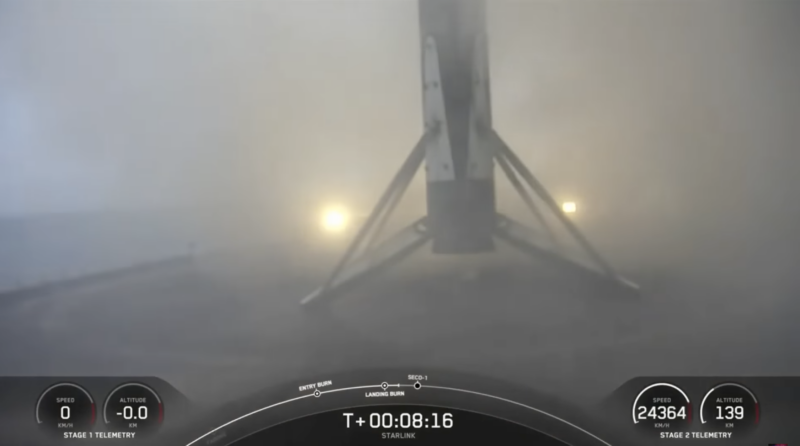
While the rocket was entirely concealed by Vandenberg’s notorious cloak of fog, the first phase of its ascent appeared to be nominal. The Falcon 9 went supersonic 55 seconds after launch. 12 seconds later, it passed through Max-Q, the point where the atmosphere exerts its maximum aerodynamic pressure on the rocket’s structure. Two and a half minutes after liftoff, the reusable booster was jettisoned, leaving the second stage to continue its climb to orbit.
With its role in the primary mission complete, B1063 reoriented itself with its tail pointed in its direction of flight. Its four aluminum grid fins steered it back through the atmosphere towards the Autonomous Spaceport Droneship “Of Course I Still Love You.” An entry burn reduced its velocity, keeping atmospheric heating to manageable levels. The subsequent landing burn led to a gentle landing near the center of the barge’s deck. It is worth emphasizing that the landing was successful, and that B1063 will presumably fly its 20th mission at some point in the future. However, 86 miles (134 km) overhead, events had taken a turn for the worst.

Four minutes and seven seconds into the flight, the layer of reflective insulation surrounding the single Merlin Vacuum engine’s powerhead expanded violently. Immediately thereafter, small white particles began flying across the field of view of the camera on the second stage. This trickle of icy material quickly turned into a torrent. Progressively larger chunks of debris were shedded from the stage, while frost accumulated on multiple patches of multi-layered insulation. SpaceX later confirmed that the source of the ice particles was a liquid oxygen leak [1].

Even though something was visibly wrong with the second stage, it managed to place the Starlink satellites into the planned elliptical parking orbit. After a 42-minute coast, the Merlin Vacuum engine reignited to raise the stage’s perigee (lowest altitude), circularizing the orbit and setting the stage for the deployment of the Starlink satellites. At that point, the crippled engine finally gave out. “Upper stage restart to raise perigee resulted in an engine RUD for reasons currently unknown,” wrote SpaceX CEO Elon Musk [2]. (In the aerospace industry, RUD, or Rapid Unscheduled Disassembly, is a common euphemism for an explosion.) It is unknown how much space debris, if any, was created by the detonation. However, the SpaceX team was later able to place the second stage into a passive state [1], which implies that the bulk of its structure remained intact.
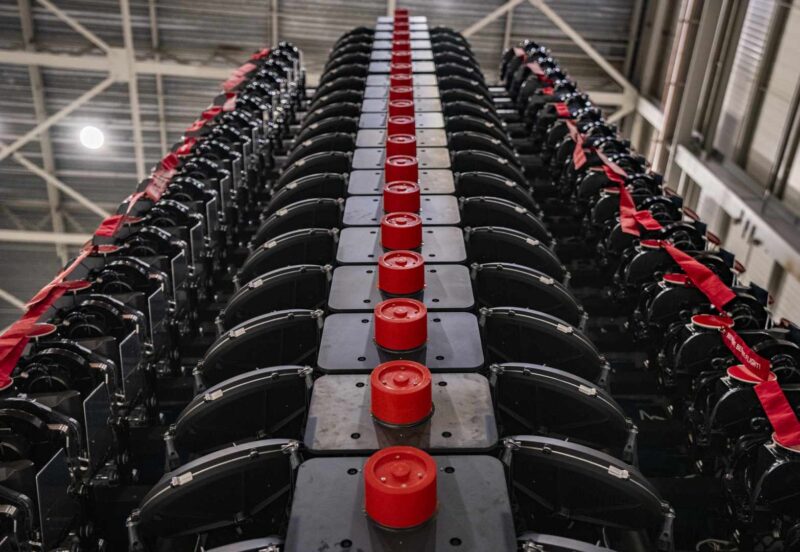
Despite the engine failure, SpaceX was able to deploy the Starlink satellites and establish communications with 10 of them. Without a circularized orbit, they were in a difficult predicament. The satellites retained their original perigee of 86 miles (134 km), which is just 21 miles (34 km) above the internationally recognized edge of space. The Starlink team made a valiant effort to move the surviving satellites into stable orbits using their highly efficient but low-thrust krypton ion drives. “We’re updating satellite software to run the ion thrusters at their equivalent of Warp 9,” Musk wrote three hours after launch [3]. “Unlike [in] a Star Trek episode, this will probably not work, but it’s worth a shot.” Unfortunately, the satellites’ propulsion systems could not compensate for friction from the upper atmosphere, which caused their apogees to decrease by five kilometers during every orbit. By the morning of July 12th, SpaceX concluded that they were beyond recovery.
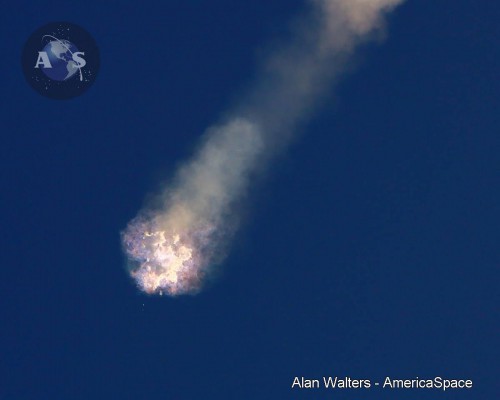
Starlink 9-3 was the first failure of a Falcon 9 since September of 2016. During the intervening eight years, SpaceX’s workhorse launch vehicle enjoyed a remarkable run of 325 consecutive successful launches. In addition, SpaceX launched ten Falcon Heavies, which are derived from the Falcon 9, during this period. That is the longest streak of successful flights by any rocket in history by more than a factor of two. It is a far cry from its checkered early history, where SpaceX gradually surmounted the challenges associated with scaling up a launch cadence. The 19th Falcon 9 mission, CRS-7, was lost during ascent in June of 2015; what would have been its 28th flight, AMOS-6, exploded on the launch pad 15 months later.
When the Falcon 9 returned to flight for the second time, its reliability markedly improved. Improved quality control procedures, the recovery and inspection of first stage boosters, and the introduction of the enhanced Block 5 variant all contributed to its emergence as history’s most reliable launch vehicle. In turn, the dependability of the Falcon 9 helped SpaceX grow into the Western world’s dominant launch provider and provided the financial reserves for the development of Starlink and Starship.
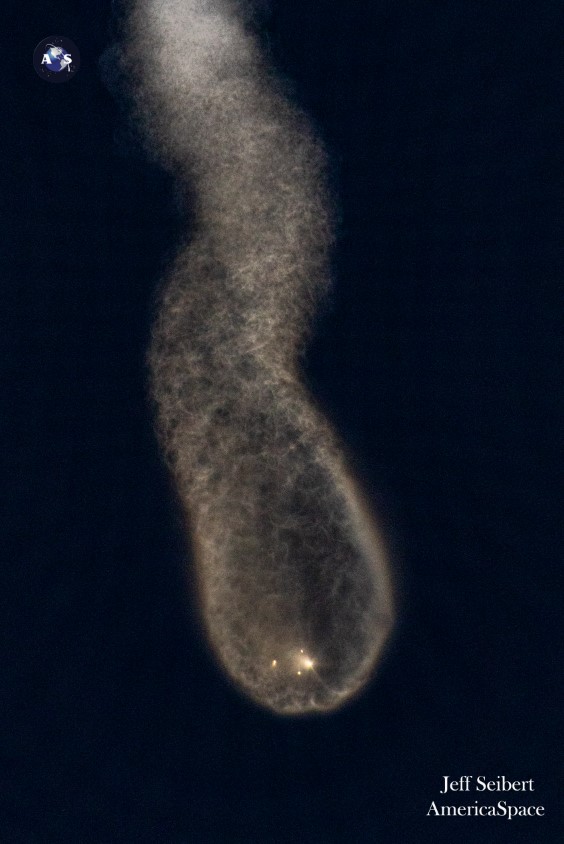
While Musk aspires to airline-like operations, in reality, rockets and aircraft have very little in common. To place a payload in orbit, a rocket must accelerate to Mach 25 in under 10 minutes. At that point, it has over 600 times the kinetic energy of an airliner with an equivalent mass. Given these unforgiving laws of physics and the demanding requirements levied upon rocket engines, occasional failures are inevitable. One of the lessons learned from the Space Shuttle era is that spaceflight will likely never be truly routine; if anything, that illusion engenders risk. SpaceX acknowledged that reality in its post-launch press release: “This event is a reminder of how technically challenging spaceflight is” [1]. The fact that SpaceX has made spaceflight appear commonplace with the Falcon 9 is a testament to the talent and the vigilance of the team of young engineers who build, maintain, and launch it.
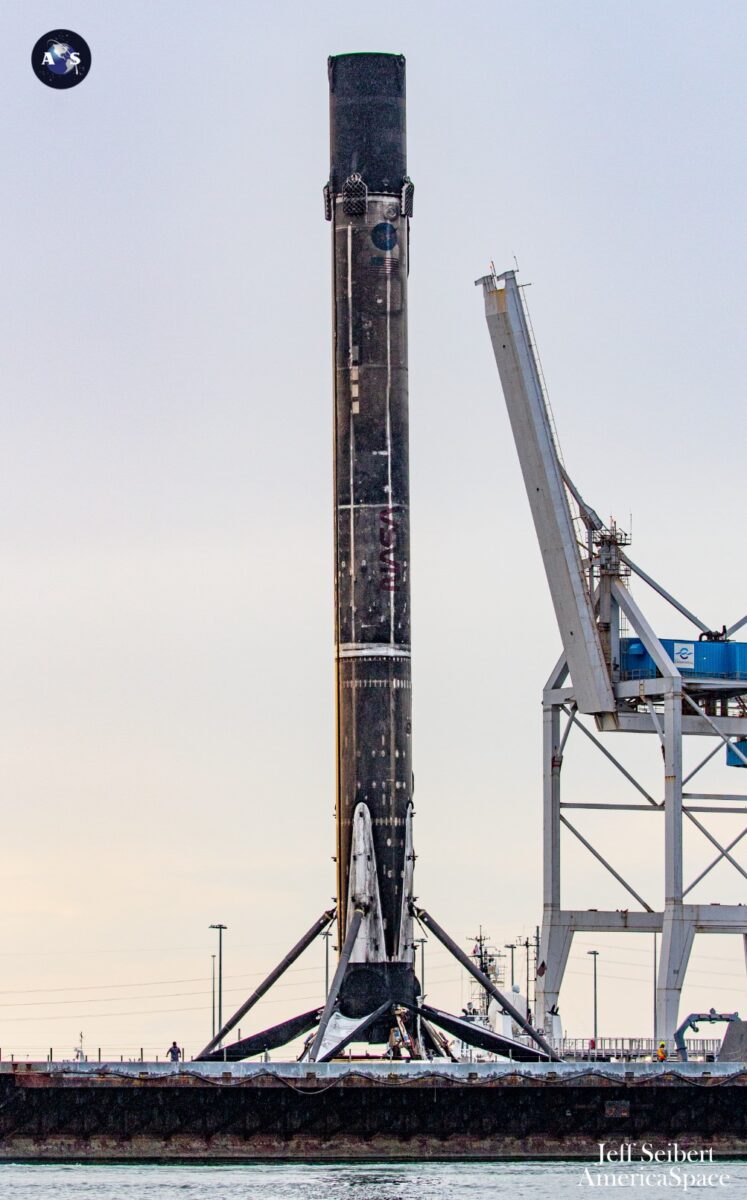
Now that the Starlink satellites have reentered, SpaceX’s attention will shift to recovering from the anomaly. The Federal Aviation Administration (FAA), the regulatory agency charged with overseeing rocket launches, has already announced that there will be an official investigation into the launch. This is standard protocol for any mission which does not reach its targeted orbit. “A return to flight is based on the FAA determining that any system, process, or procedure related to the mishap does not affect public safety. In addition, SpaceX may need to request and receive approval from the FAA to modify its license that incorporates any corrective actions and meet all other licensing requirements,” the agency wrote in a statement [4].
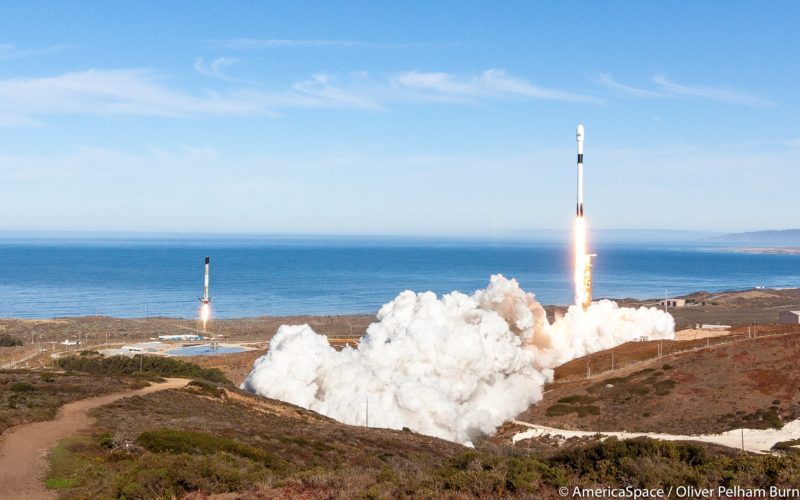
The length of the investigation will likely depend on the root cause of the liquid oxygen leak. SpaceX typically responds to anomalies in an agile manner. The CRS-7 and AMOS-6 anomalies were resolved in six and four months, respectively. If the Starlink 9-3 failure was the result of a simple issue, such as a manufacturing defect, and if this fault can be easily identified using in-flight telemetry, inspecting other second stages for similar issues would be relatively straightforward. That could lead to a resumption of flights in relatively short order, pending FAA approval. However, additional analysis and ground-based testing might be required to identify a more subtle design flaw, such as the buckled composite overwrapped pressure vessel (COPV) liner which doomed AMOS-6. Ultimately, the hiatus before Falcon 9’s return to flight will be driven by the data and by the nature of the Starlink 9-3 anomaly.
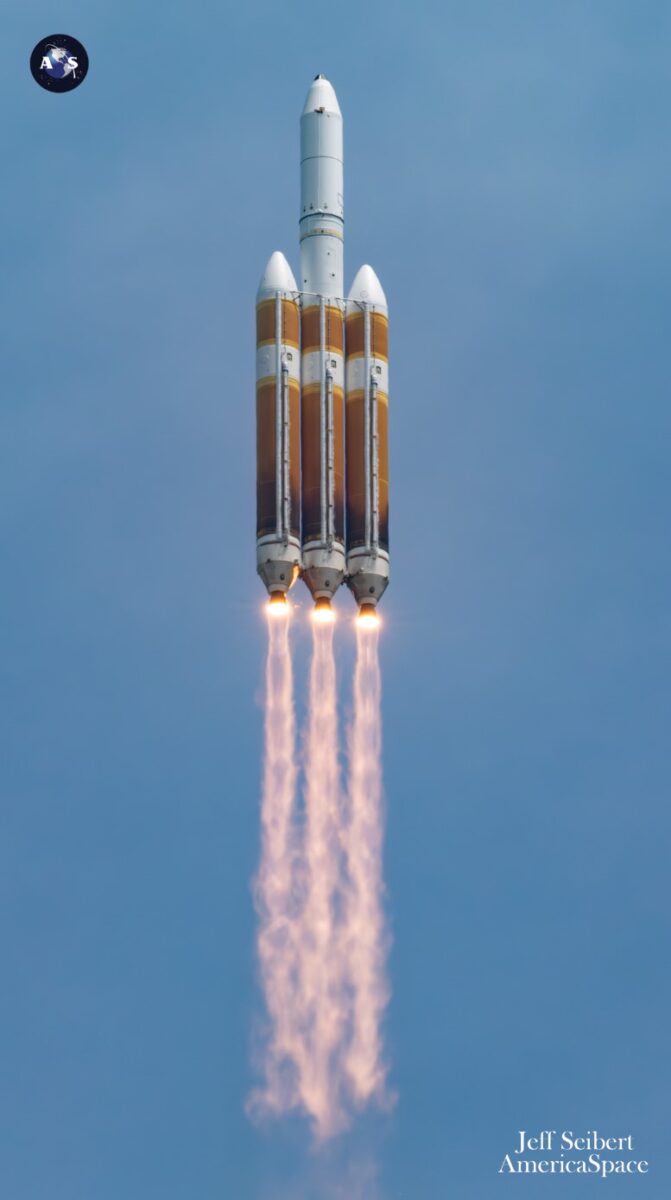
The Falcon 9 currently dominates the commercial launch industry because of its reliability and its low cost. Heritage launch vehicles, such as the Atlas V and the Delta IV, are being phased out. Next-generation launchers, such as ULA’s Vulcan and Blue Origin’s New Glenn, are still in development or testing. Therefore, the loss of this mission will likely have ramifications for NASA, the Space Force, and commercial customers. Payloads which were scheduled to launch in the coming weeks, such as the next WorldView Legion satellites and the Arctic Satellite Broadband Mission, will face delays. If the investigation stretches into October, it could impact the launch of the flagship Europa Clipper spacecraft. However, on Friday, NASA announced that Clipper may be facing delays of its own due to its transistors’ vulnerability to Jovian radiation [5].
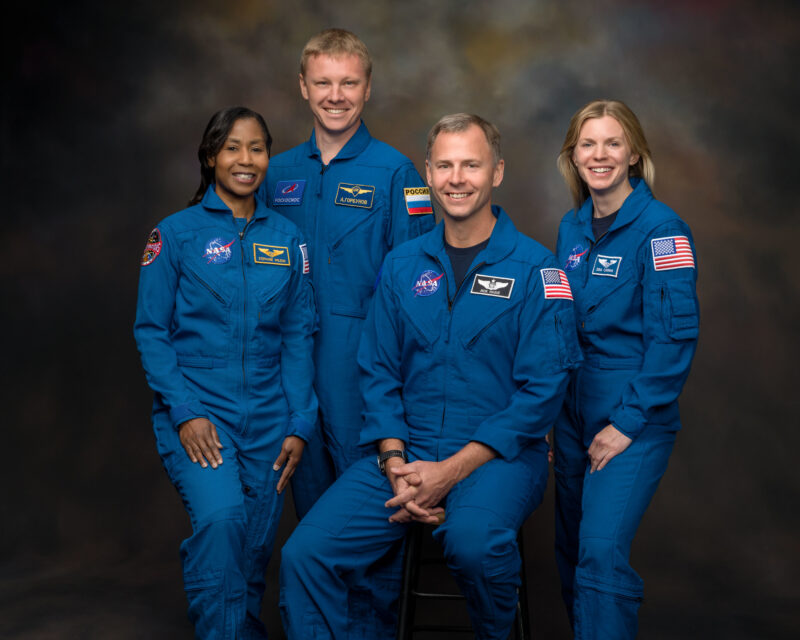
The effects of any stand-down will be particularly acute for the International Space Station program. A Falcon 9 was scheduled to launch the Crew Dragon Endurance to the ISS in mid-August on the SpaceX Crew-9 mission. Astronauts Zena Cardman, Nick Hague, Stephanie Wilson, and Aleksandr Gorbunov are slated to relieve the Crew-8 quartet, who are nearing the end of their mission. Depending on the length of the mishap investigation and any subsequent pathfinder launches, this crew rotation could be delayed. The same fate might await Jared Isaacman’s private Polaris Dawn mission, which was scheduled to launch at the end of the month. If Polaris Dawn is pushed into August, it is unclear whether it or Crew-9 would launch first. The next ISS cargo delivery might also be postponed, as Northrop Grumman’s Cygnus freighter is currently launching on the Falcon 9 due to the unavailability of its Antares rocket.

The loss of a Falcon 9, one of the world’s most reliable rockets, is a powerful reminder that spaceflight will always be challenging and that exploring the final frontier is not for the faint of heart. It is also an opportunity to reflect on how the SpaceX team has opened up new possibilities in space and set new benchmarks for launch cadence, mass production, and reusability. The company’s streak of 325 successful launches may be over, but there is little doubt that the company will resume launching regular flights to orbit in relatively short order.
Missions » Commercial Space » Starlink »
Posts associated with the Commercial Space missions
